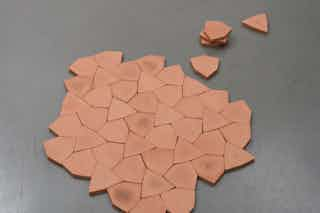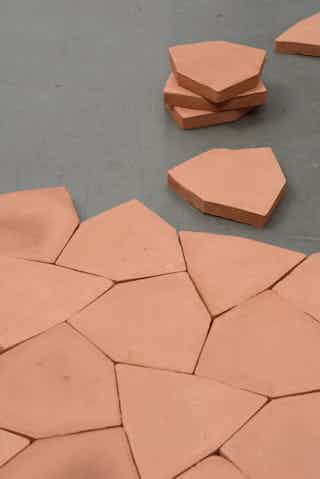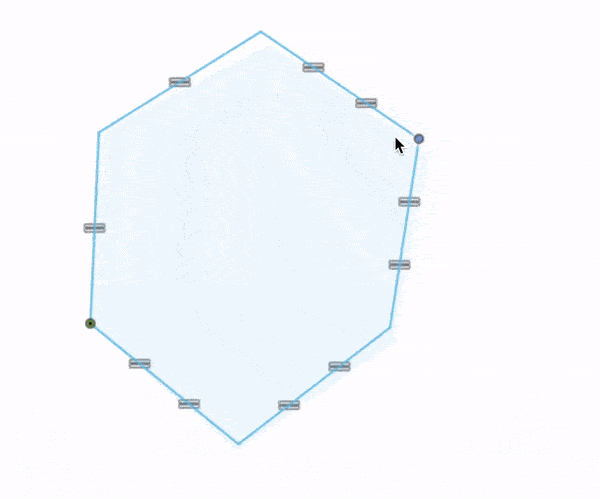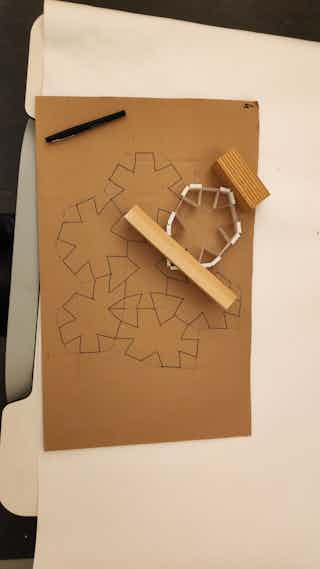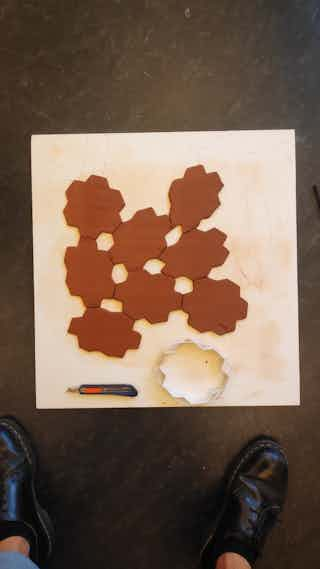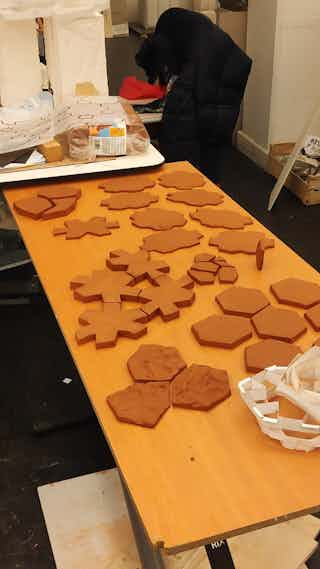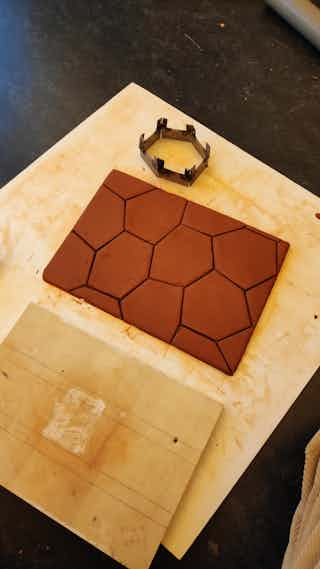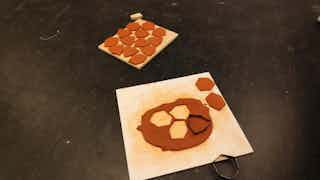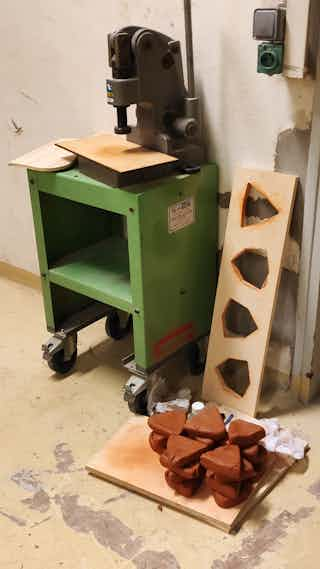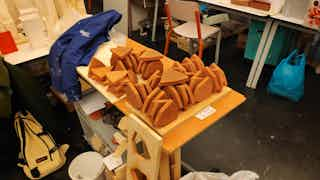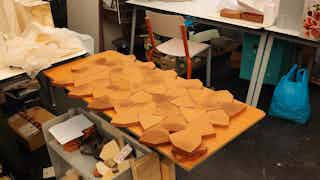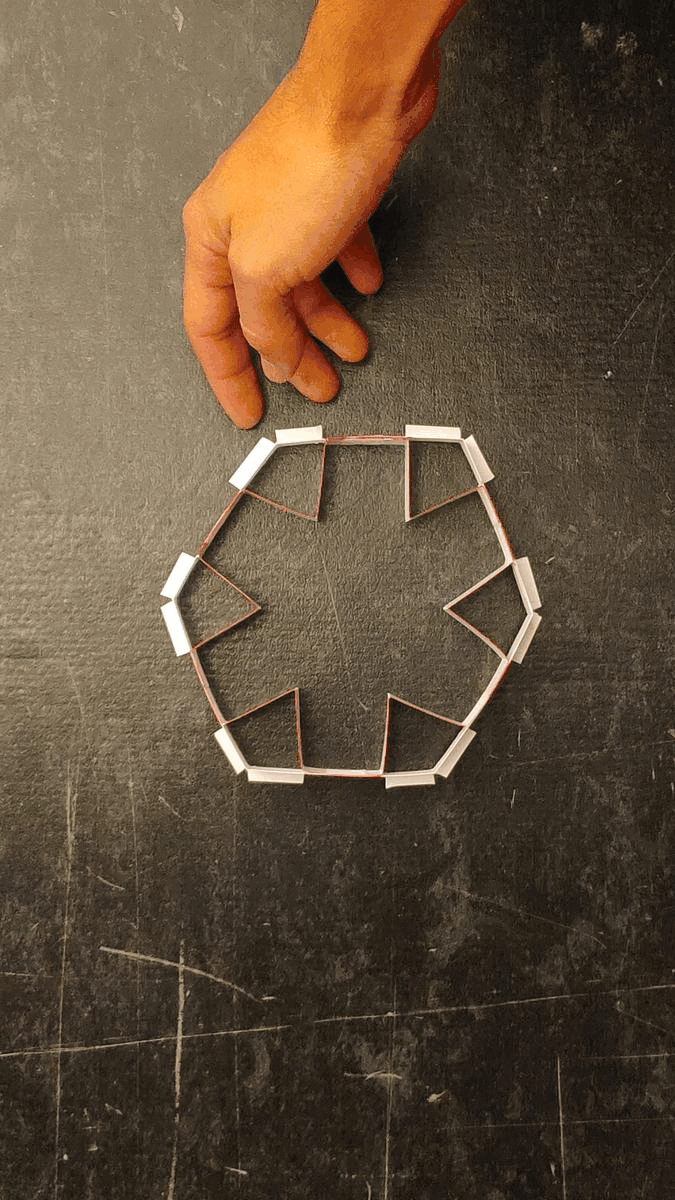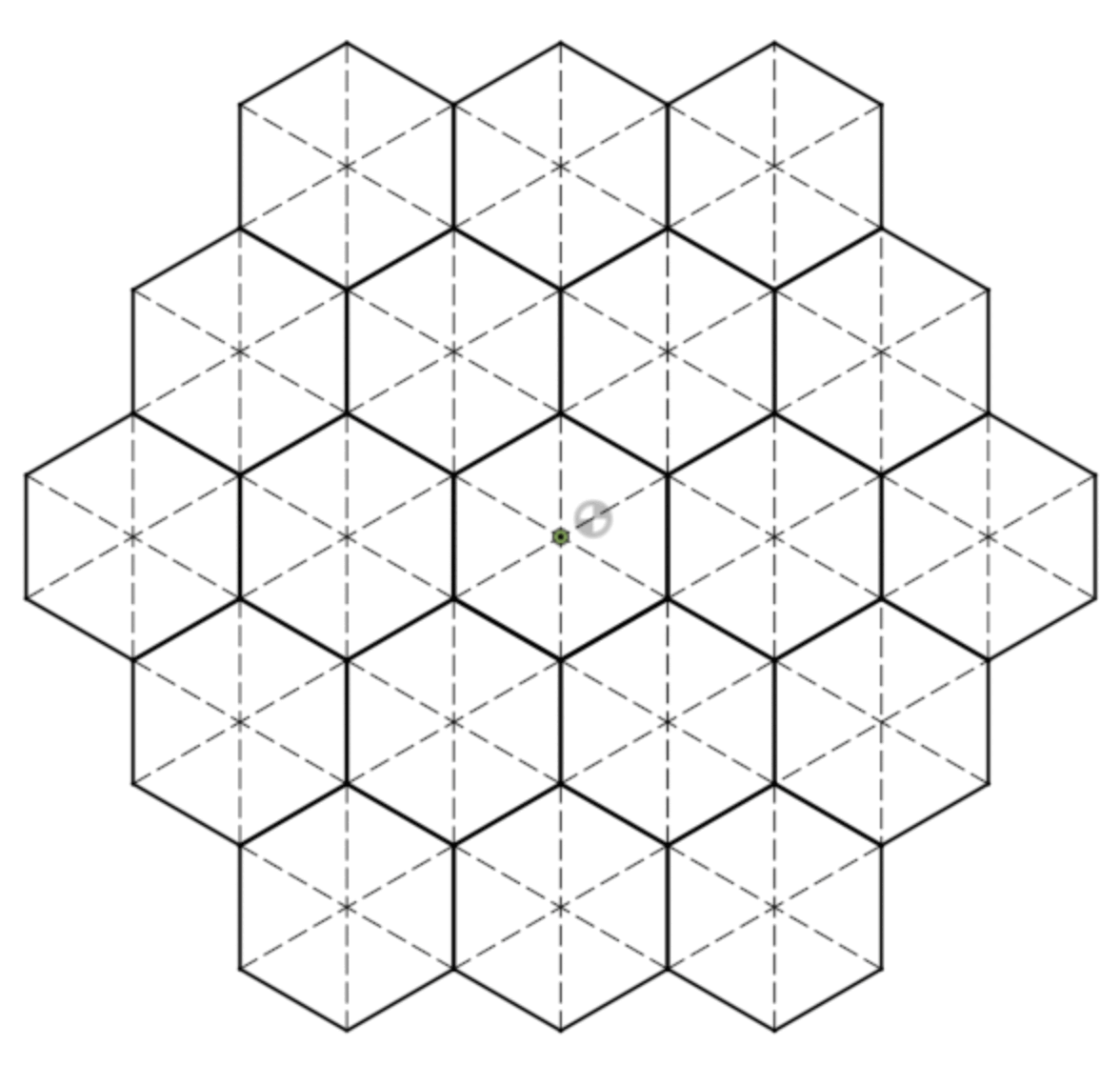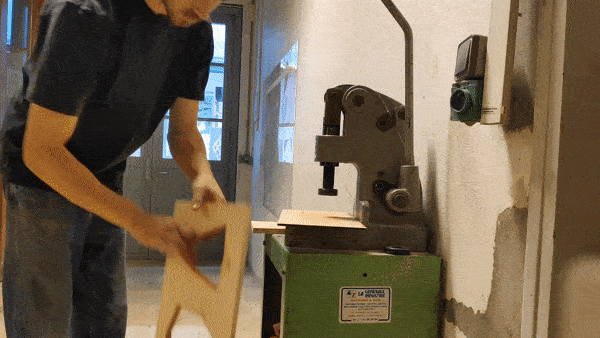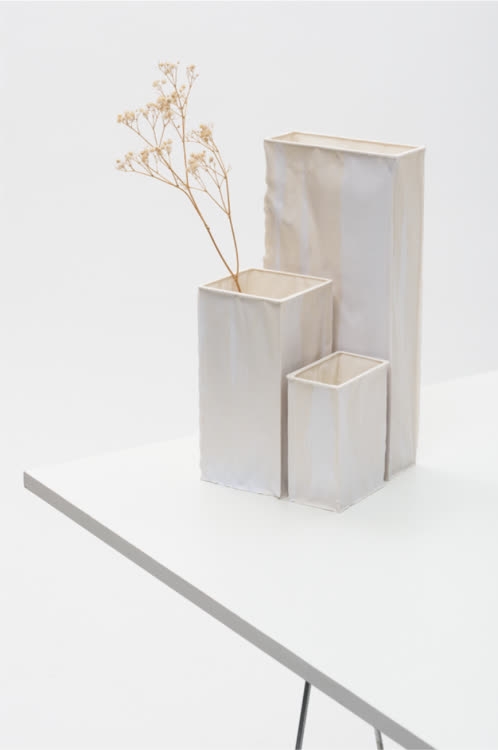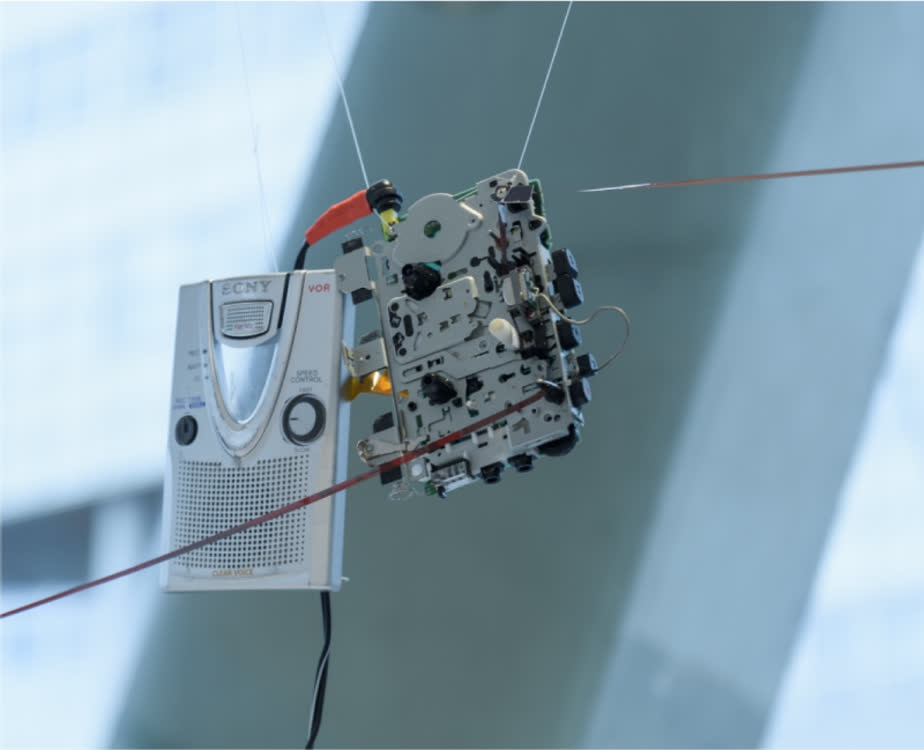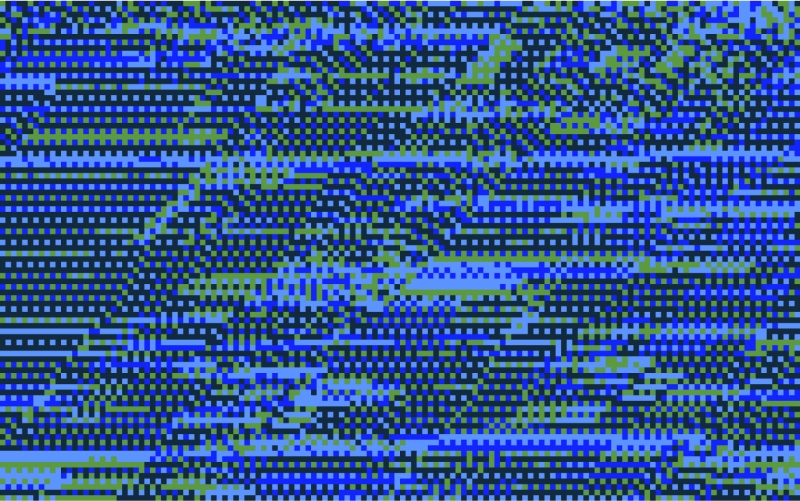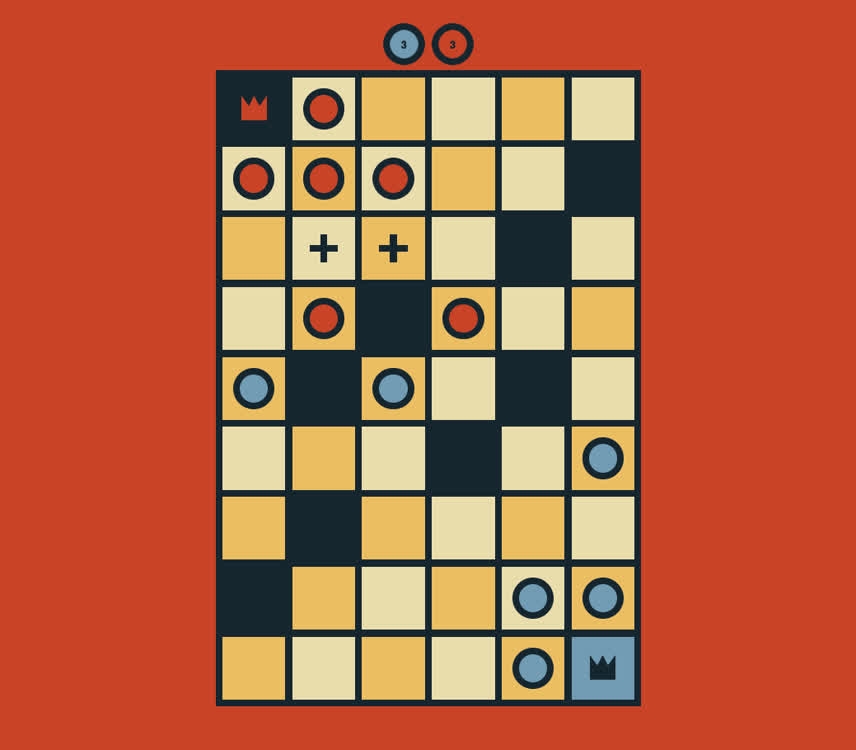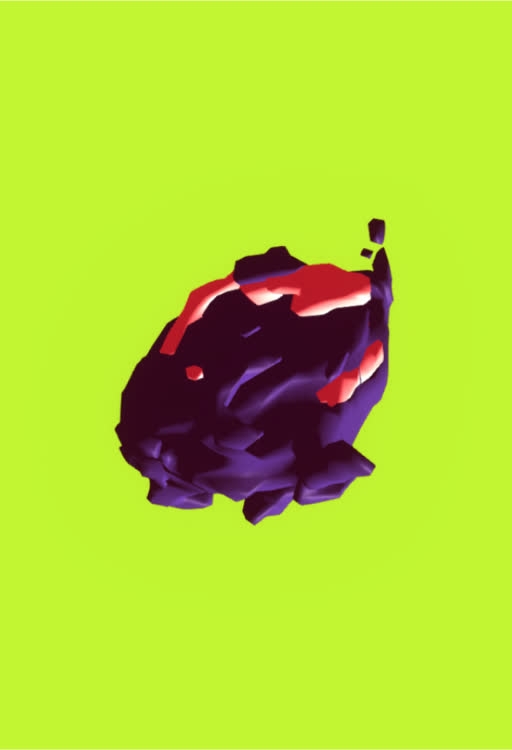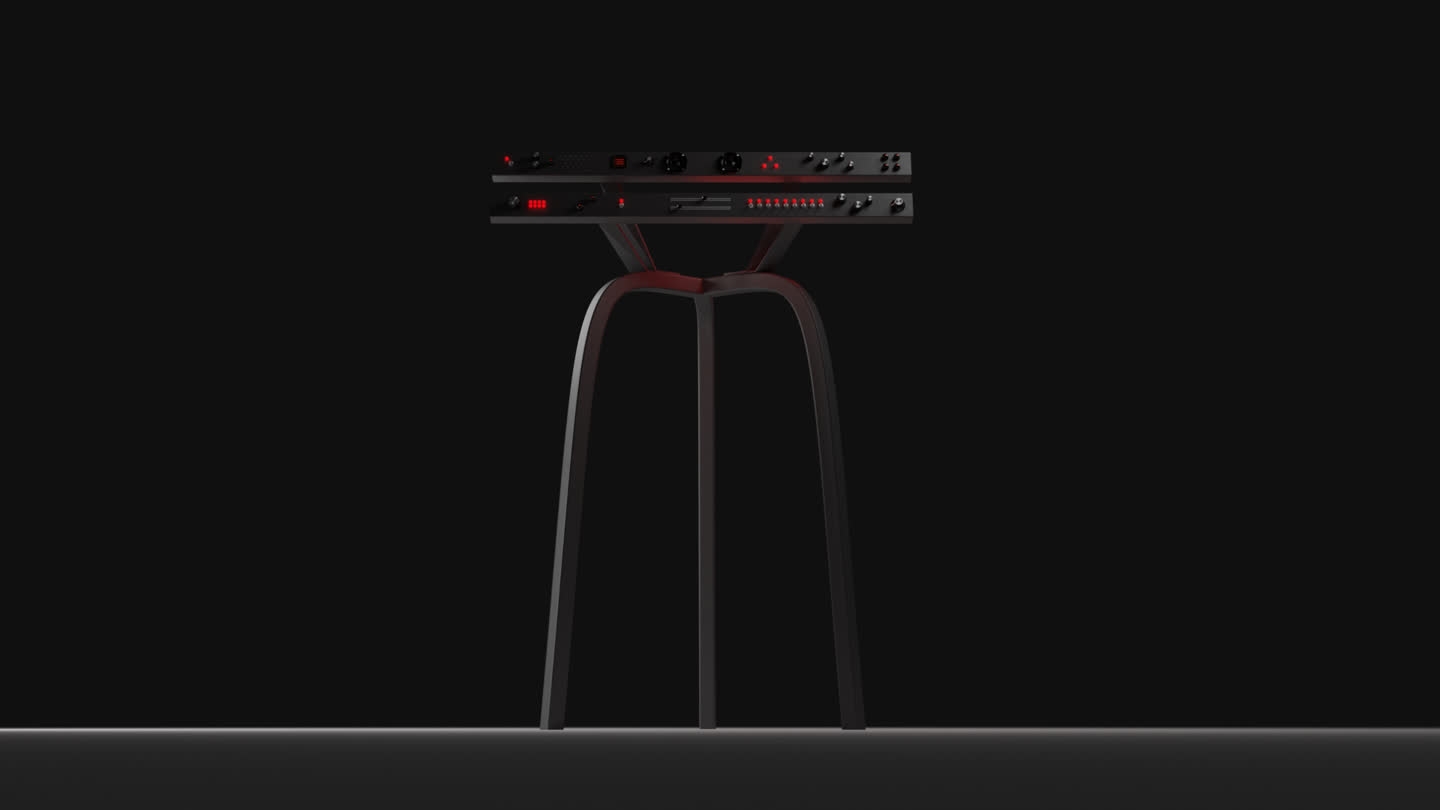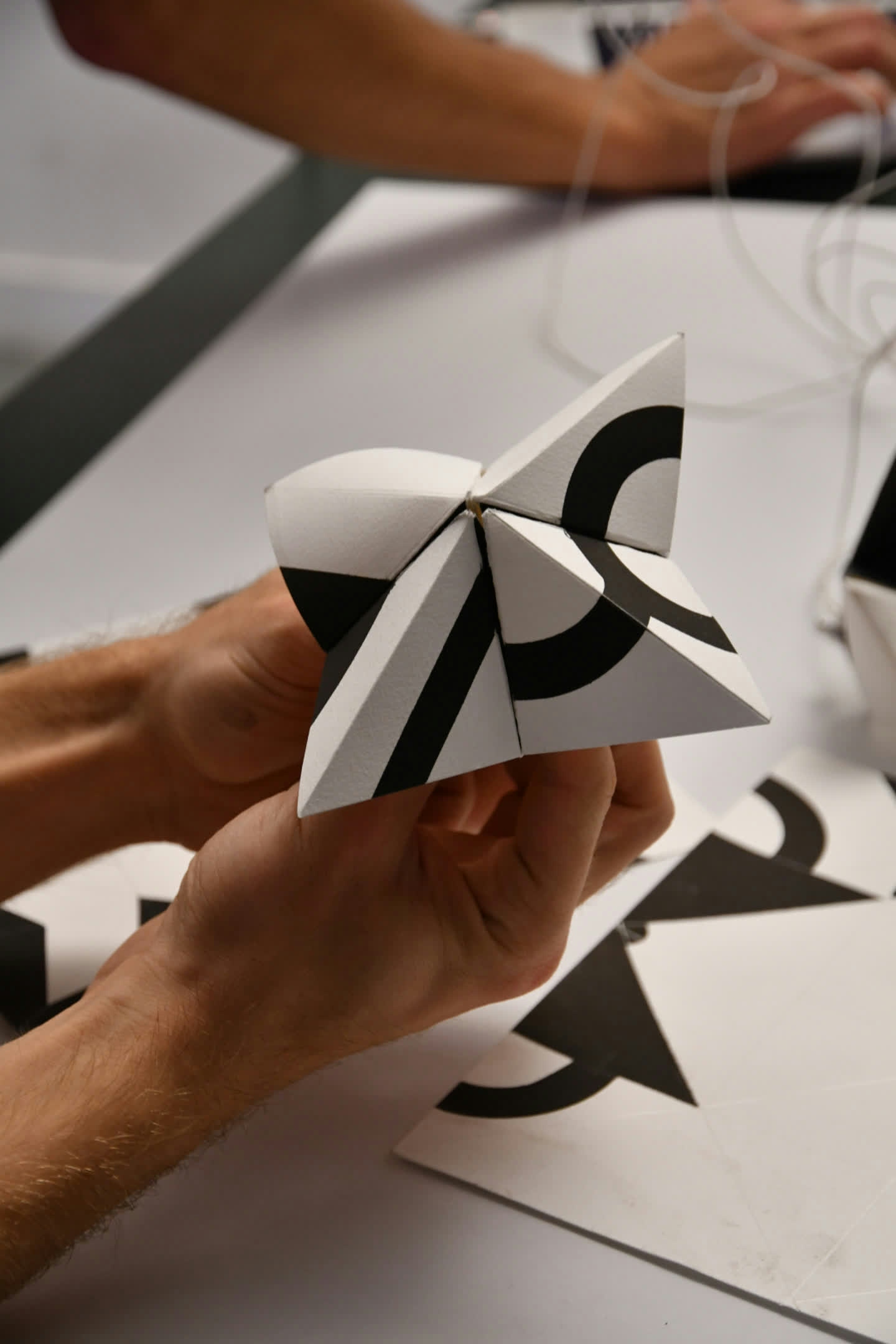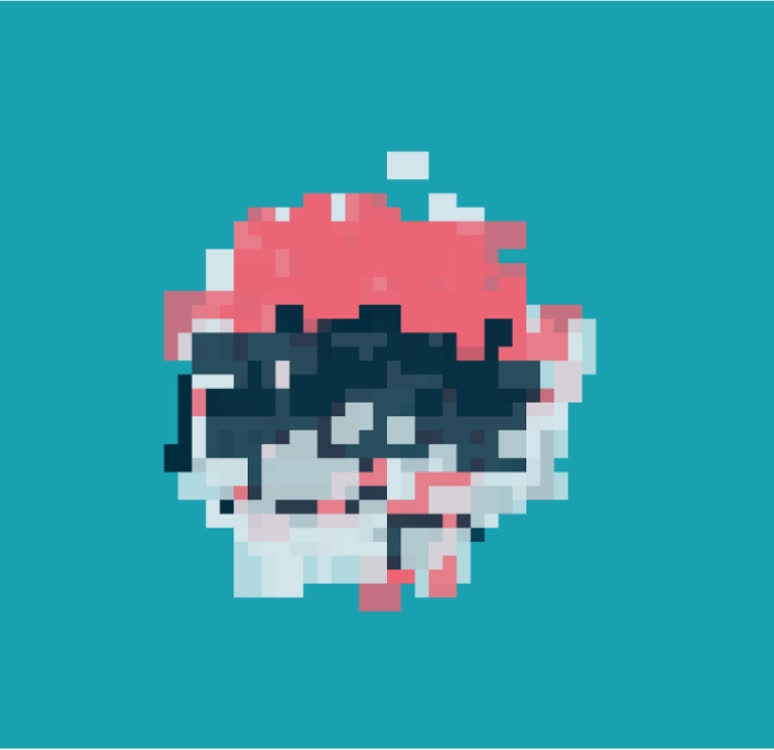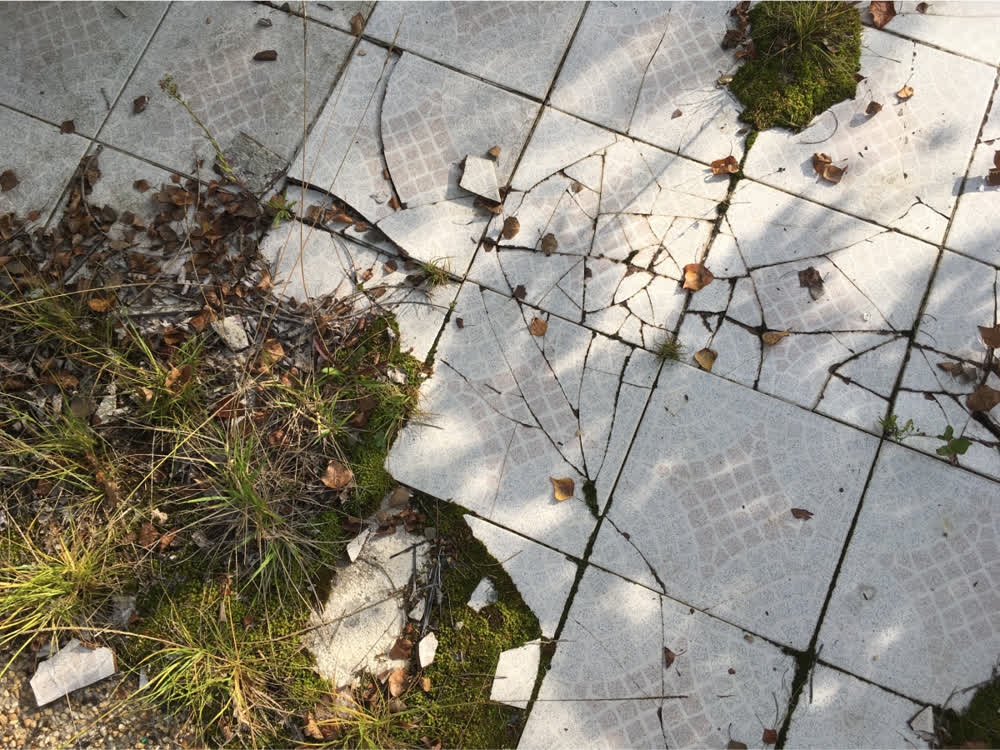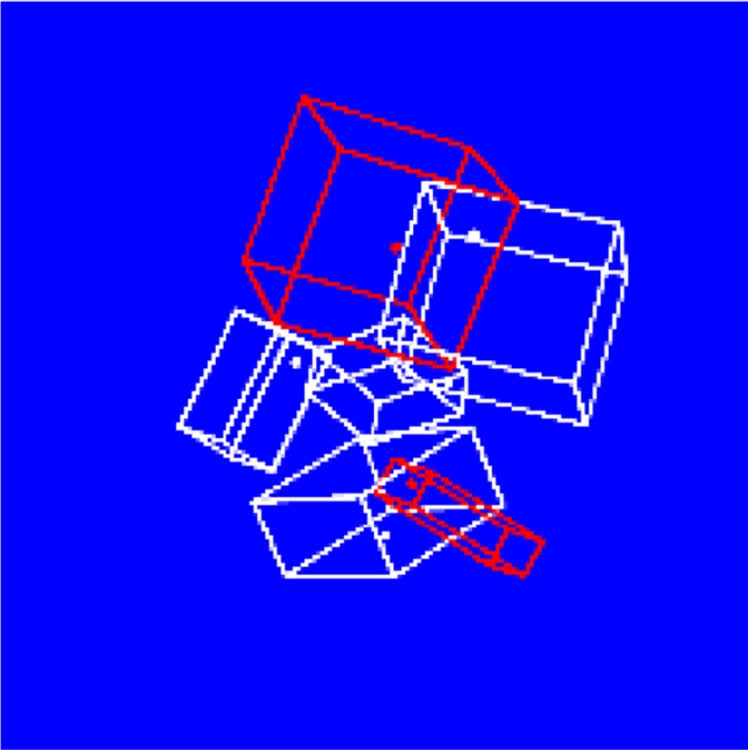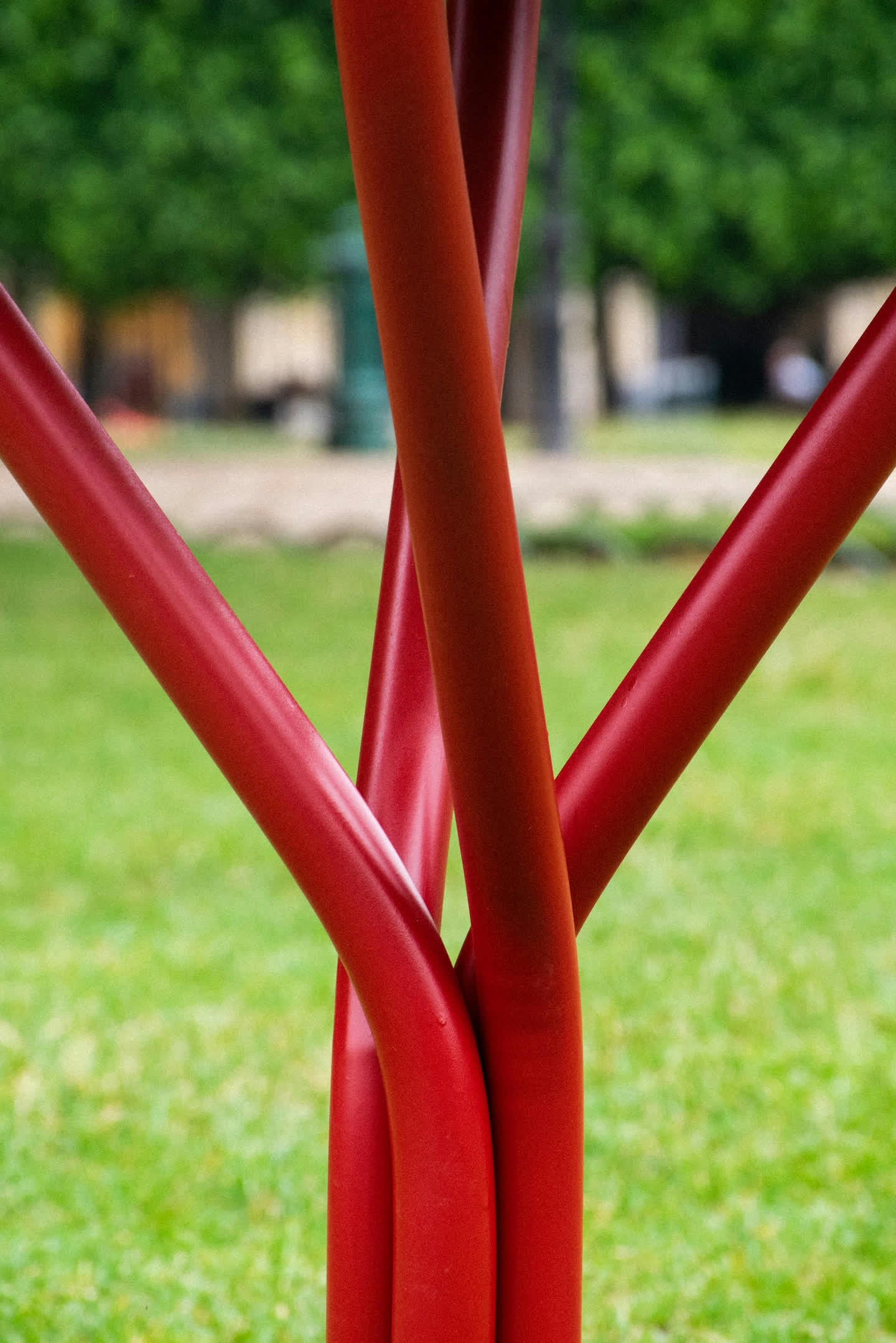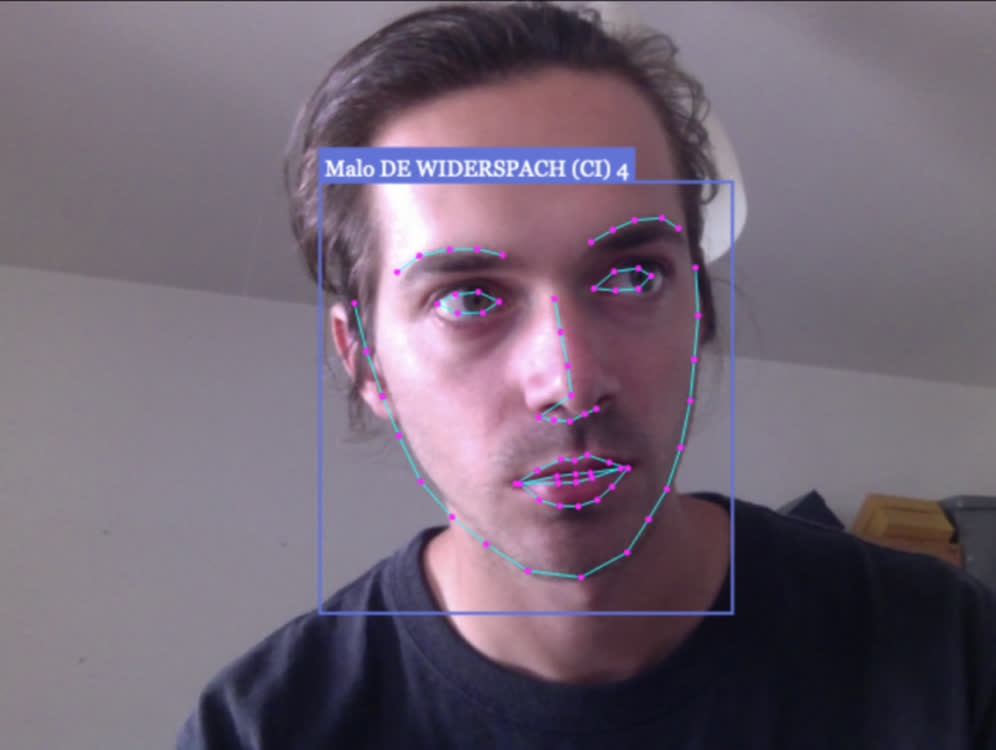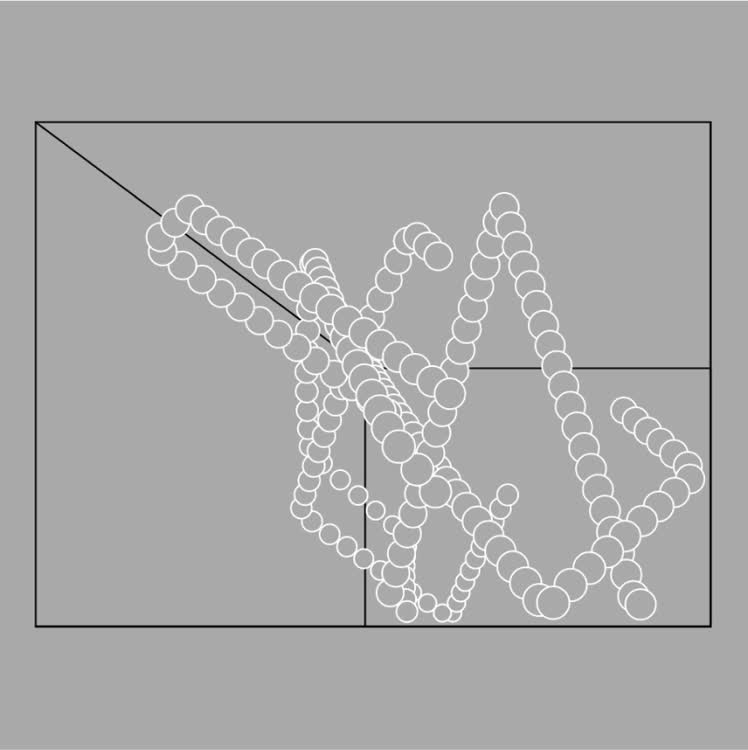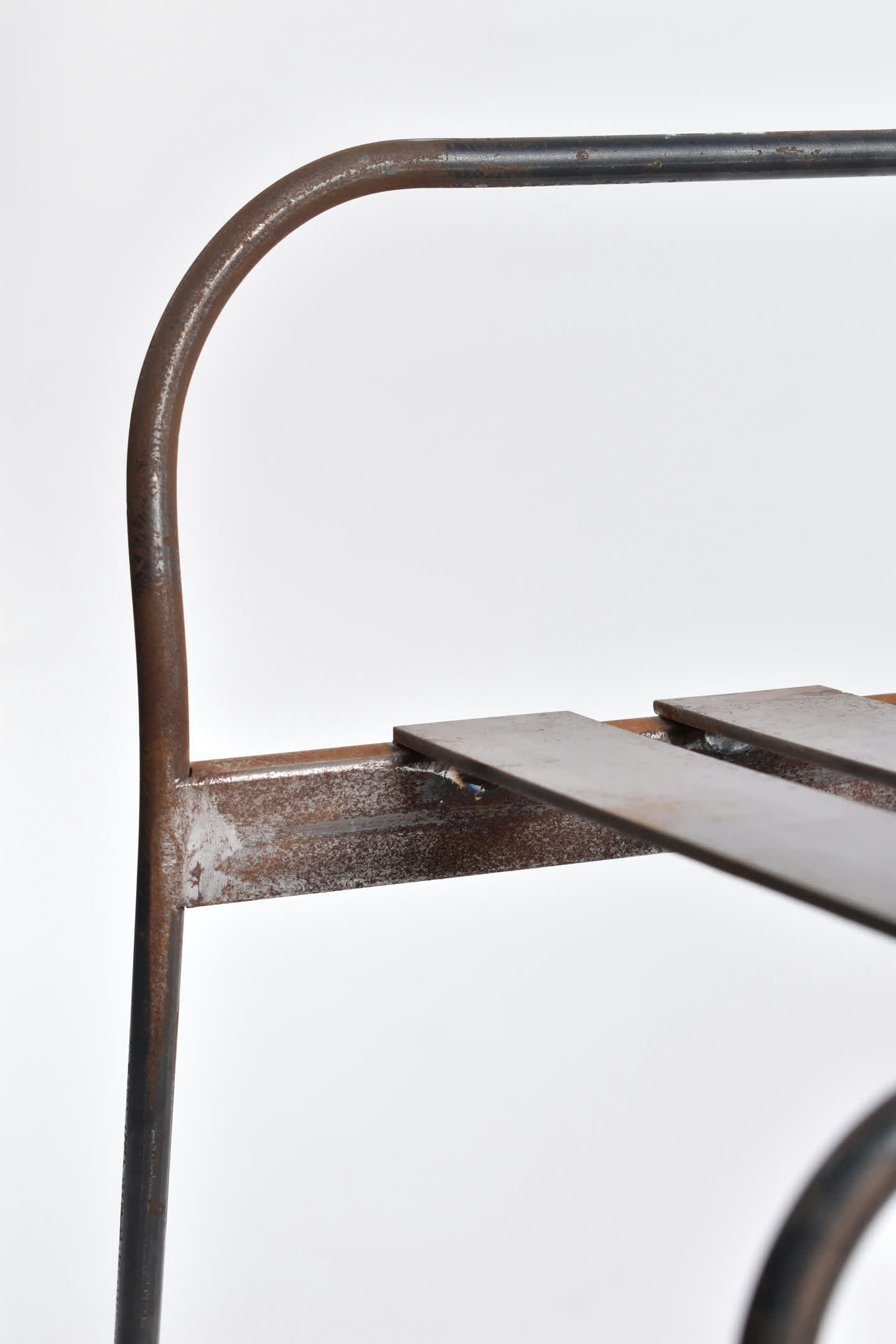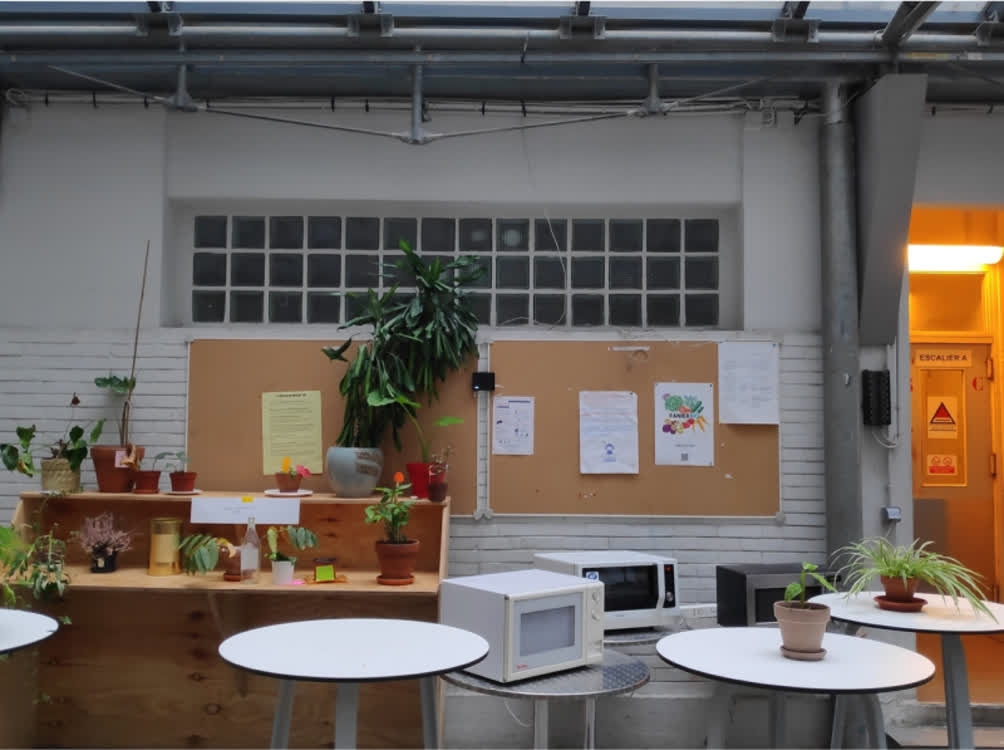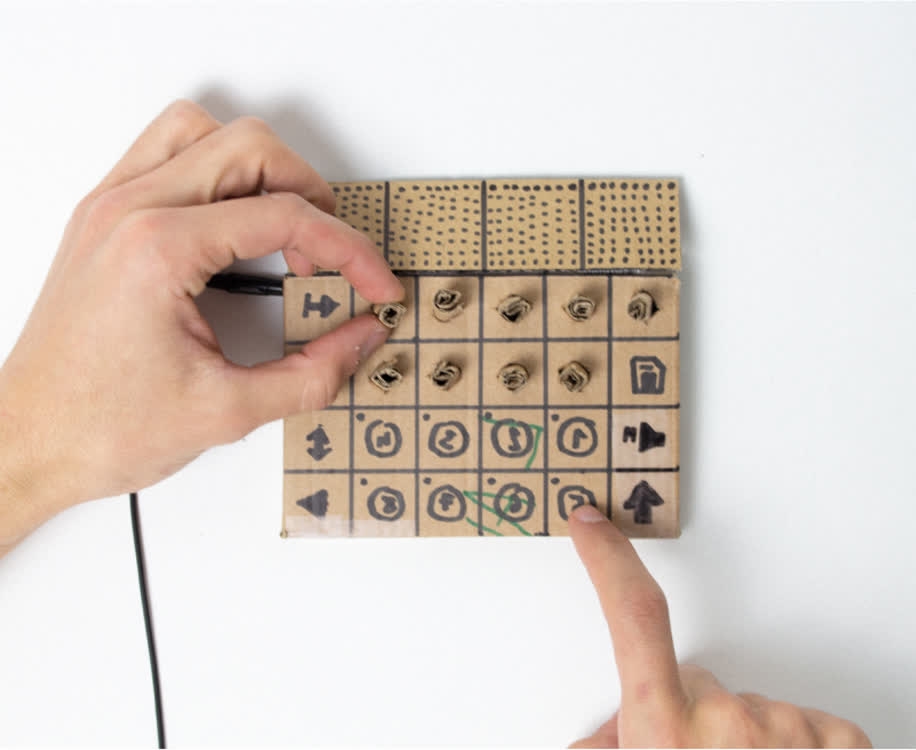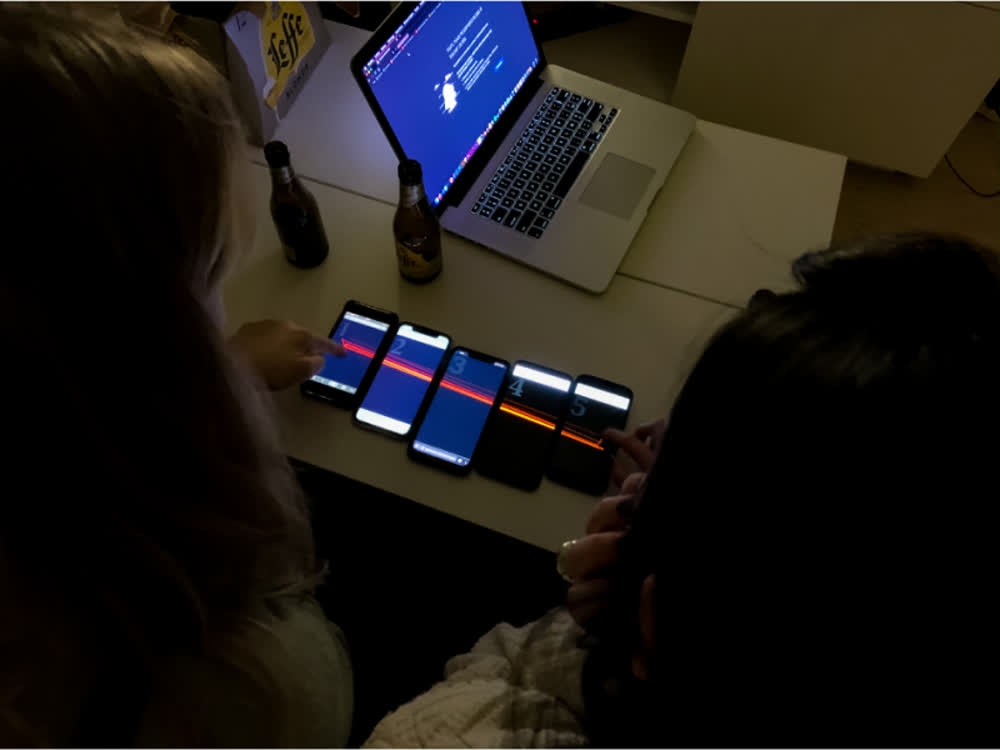Traditionally, Provençal tiles are hexagonal in shape, allowing them to be paved with a single polygon. In this project, I reconsider this regular shape by imagining a fluid, modular punch.
To enable the different pieces to function as tessellations, I decide to fix the lengths and free the angle values. My first punches are made of paper. I try out many geometric shapes of varying complexity, even experimenting with fractal patterns, but eventually returning to the isometric hexagon. I then made a steel punch whose sides are connected by hinges, enabling me to cut freehand tiles from clay. However, this interesting process comes up against a major obstacle, as the tomettes have to be dried, fired and then cemented after cutting. As each tomette is unique, designing a floor of over one square metre becomes a logistical headache and a real puzzle. So I decided to use constraint-based design software to draw patterns consisting of just two, three or four different tomette shapes.
I then make a wooden mold into which the clay is pressed using traditional tile-making techniques. Once again, it's by perfecting a manufacturing protocol that I drastically increase production speed. I used 20kg of clay for around fifty tiles in one afternoon. I rigorously fix these shapes in fixed dies, but after a few cuts, I realize that the process is very time-consuming. The tomettes don't all have the same thickness and stick to the die.
I find that the patterns generated have something very strong, the subtle quality of a drawing that hasn't even been drawn.
This project was made at ENSCI—Les Ateliers under the direction of Jean-François Dingjian and François Lafortune.
